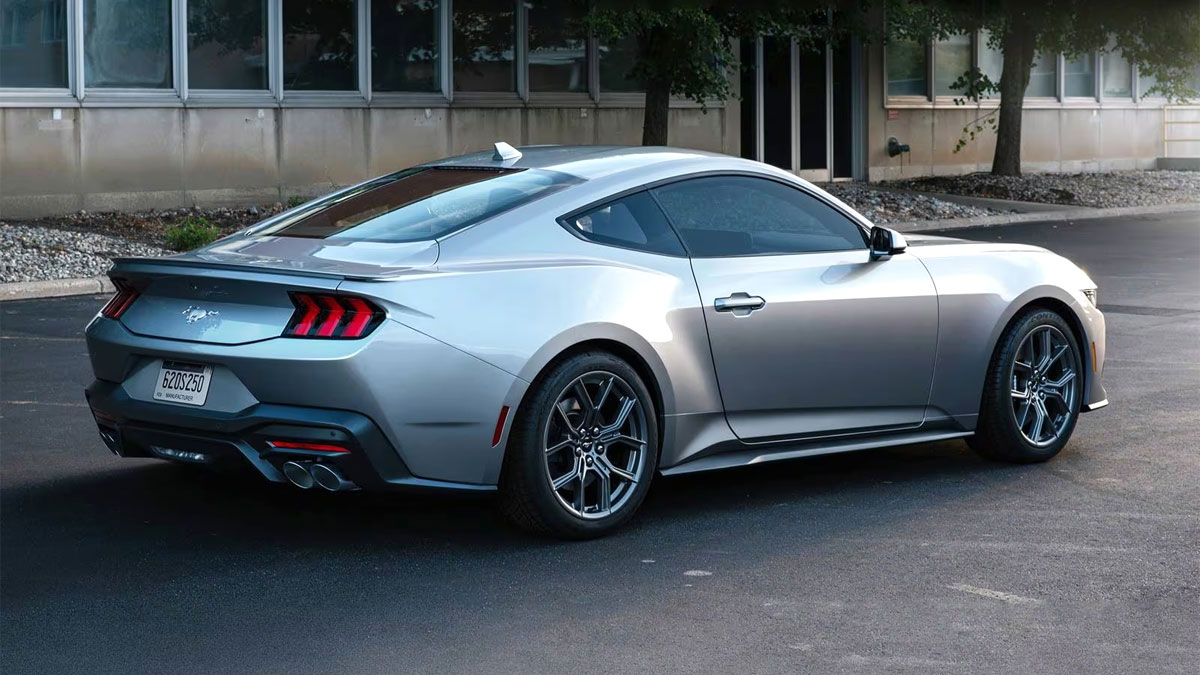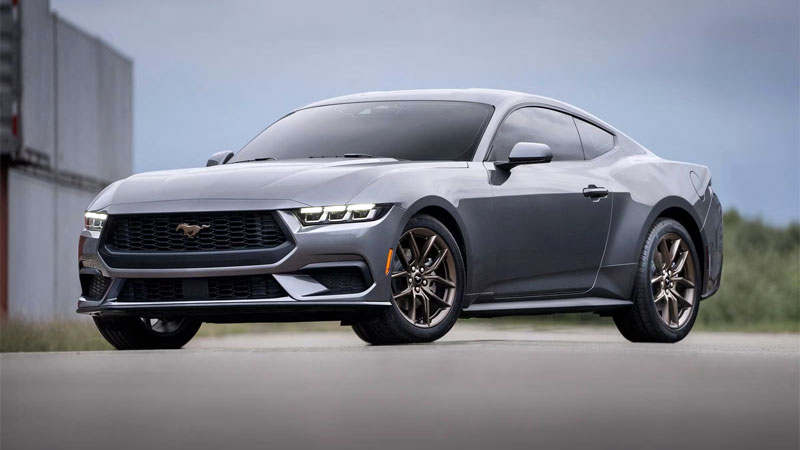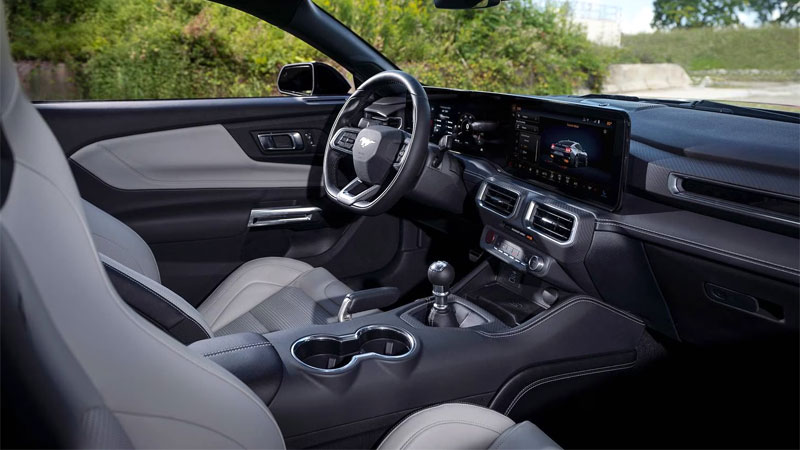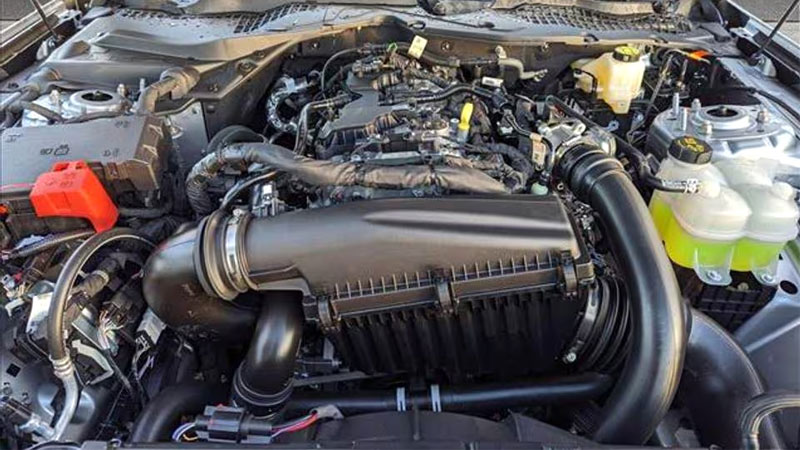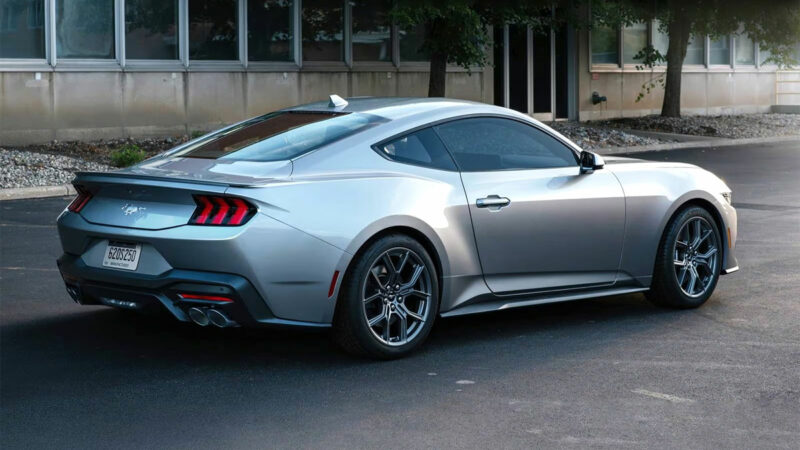The 2024 Ford Mustang introduces subtle updates as it ushers in what Ford proclaims to be the seventh generation of this legendary car.
While some might question this milestone, the key takeaway remains clear: Ford is committed to preserving its beloved pony car, even as rivals disappear (Camaro) or undergo significant transformations (Challenger/Charger). The Mustang’s ability to connect generations has fortified its position for over six decades and we’re thrilled to experience it.
2024 Ford Mustang
The 2024 Ford Mustang comes in six trims: EcoBoost Fastback ($30,920/$39,020), EcoBoost Premium Fastback ($36,445/$41,945), GT Fastback ($41,960), GT Premium Fastback ($46,480/$51,980), Dark Horse ($58,185), and Dark Horse Premium ($62,180).
For models offering two price points, the initial price corresponds to the hardtop coupe, while the latter is for the convertible variant. An additional $1,595 is required for delivery fees.
The Mustang, designed with rear-wheel drive and four seats, starts with a base model equipped with a turbocharged four-cylinder engine and an automatic transmission. Higher-tier models feature a V8 engine, which can be paired with either a manual or an automatic transmission.
Exterior Highlights
Ford says nearly everything about the new Mustang’s exterior has changed. Those changes, though, are more evolutionary than they are revolutionary.
A cursory walkaround may not easily reveal those changes except to devoted Mustang faithful. Most noticeable are the three small LED lamps on each side of the front fascia, replacing the previous circular lamp. Further, the turn signals are now incorporated within the frontal illumination as Ford moves slightly away from the previous retro design.
The Mustang’s design removes the shoulder line creases, retaining softer side sill creases. Rear fender flares are more pronounced with sharp, accentuating lines.
The iconic sequential rear lights remain, but the panel between them now matches the body color, replacing the previous black. The car appears slightly shorter from the side due to a reduced rear overhang. Updates also include new wheel designs and a refreshed color palette.
Interior Highlights
Mustang enthusiasts are aware that the 2+2 seating arrangement is ideally suited for just two people. Rear seating is cramped, with minimal legroom as it presses against the front seats, except when both the driver and front passenger are shorter and their seats are adjusted forward.
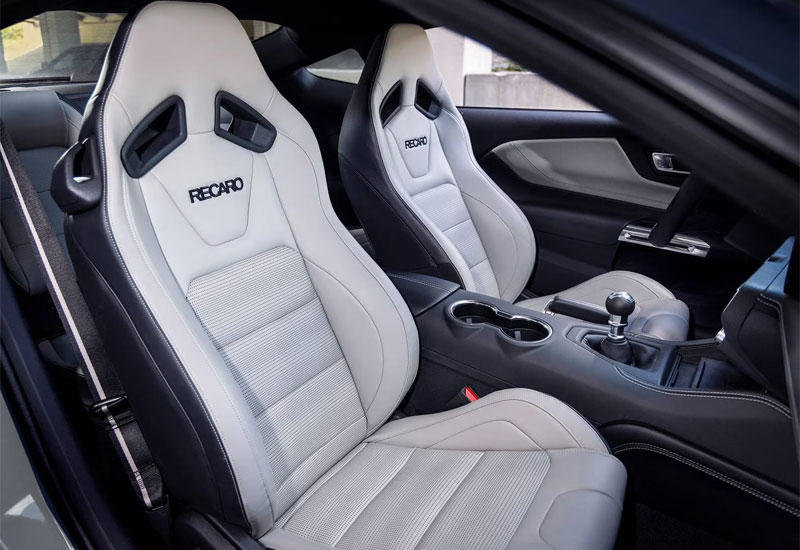
Even then, accessing the rear seats is cumbersome, although convertibles offer slightly easier entry and exit when the roof is down.
Our test model came with comfortable front seats with heating and cooling controls. The standard Active-X seating in the Premium models are plush and supportive. They are power-controlled too, with the driver enjoying six-way adjustment and the front passenger four-way movement.
Optionally, leather seats are available as are body-hugging Recaros. The drawback on the Recaros is that they do not include heating and cooling features. They’re also extremely uncomfortable for anyone who battles lower back pain.
Ford also rearranged the Mustang’s dashboard. We’ll touch on the tech changes below. Most noticeably, the HVAC vents were reshaped and lowered, with prominence given to the screens.
Technology and Safety
The 2024 Mustang introduces a major update with its entirely digital control interface, including a 12.4-inch digital instrument cluster that offers a variety of customizable animations and drive mode-specific visuals.
Leveraging the Unreal Engine 3D technology, akin to that used in contemporary video games, it presents the car’s settings as dynamic graphics on the center console. Users can interact with these settings through a swipe gesture, rotating a virtual model of the car for a playful and interactive experience.
The center console offers an optional wireless charging pad for mobile phones, and new USB ports are positioned above the cockpit to connect track cameras and devices neatly, avoiding cable clutter.
For safety, Ford includes a variety of features such as adaptive cruise control with stop-and-go functionality, lane-keeping assist, and automatic emergency braking.
Performance
For 2024, Ford offers a pair of engine choices. Likely, we’ll see special edition models with more powerful engines roll out, but for now the choices are between a turbocharged four-cylinder and a V8.
The standard four-cylinder engine displaces 2.3 liters and makes 315 horsepower and 350 pound-feet of torque. That’s more power than what some V8 engines delivered from generations ago. With the standard engine, power routes to the rear wheels utilizing a 10-speed automatic transmission. No manual gearbox is offered.
Shoppers who prefer a V8 will find a naturally aspirated 5.0-liter engine in the GT. This one makes 480 horsepower and 415 pound-feet of torque. The GT also offers a choice of a 6-speed manual or a 10-speed automatic transmission.
Dark Horse models utilize the same V8, but this one comes tweaked to deliver 500 horsepower and 418 pound-feet of torque. The same transmission choices are offered, although the manual is also tuned for enhanced performance. This model comes with a high-performance braking system and adaptive suspension.
All Mustang models are tuned to run on regular-grade gasoline. Fuel economy ranges as high as 26 mpg for the standard model to about 17 mpg for the Dark Horse.
Driving Highlights
Certainly, our preferred option for the Mustang engines is the acclaimed 5.0-liter V8. However, Ford provided a version equipped with a turbocharged four-cylinder engine, so we adjusted to using it.
Our primary grievance, however, is the absence of a manual transmission for this model. To acquire one, an upgrade to the V8, costing an additional $11,000, is necessary. It’s possible that the demand for a manual transmission in combination with the four-cylinder engine is too minimal for Ford to consider offering it.
But the base engine is no slouch. And with the available soundtrack option, the four-pipe exhaust sounds very much like a V8. Yes, go ahead and argue that the synthetic noisemaker is just that. It isn’t for everyone, but it remains an option that some will embrace.
We appreciate that the standard engine is robust with sufficient power at the ready. The Mustang’s step-off acceleration is strong and when extra power is needed, the twin turbos spool up quickly in response.
Besides performance, the key factors for enjoying the Mustang is the way it steers and handles. Ford designed the chassis to maximize driver control and that’s evident with its accurate steering and nimble handling.
It delivers a level of connection often missing in today’s vehicles, easily matching far-pricier performance-oriented models in that realm.
The Mustang excels on winding roads, adeptly navigating sharp turns and smoothly handling corners. Despite its curb weight surpassing 3,500 pounds across all models, it maneuvers effortlessly.
Ford outfits this powerhouse with MacPherson strut front suspension and multi-link rear suspension, enhancing its performance on the track and making it a strong contender.
While drag racers might long for the solid-rear axle available until 2014, the modern setup, coupled with advanced braking, refined steering, and the optional adaptive suspension system, elevates the Mustang’s status as a superior vehicle for driving enthusiasts.
Ford Mustang Considerations
When you choose a Mustang, you’re connected with 60 years of iconic pony car heritage. Although prices have risen this year, you can still acquire a fully outfitted V8 model for less than $45,000.
Opting for the highest-tier model with all available options nearly doubles that price, positioning the Mustang in a category meant for a selective clientele.
Photos courtesy of the Ford Motor Company.
- 2024 Mazda CX-50: A Compact SUV with Premium Aspirations - Apr 15, 2024
- 2024 Ford Mustang (Iconic Pony Car Evolves) - Apr 4, 2024
- 2024 Ford Maverick (Looks Like a Truck, Drives Like a Car) - Mar 28, 2024

